Maximizing the potential of your rental property is crucial for achieving long-term success as a landlord. By optimizing your rental’s performance, you can increase your revenue, attract high-quality tenants, and ensure tenant satisfaction. In today’s competitive rental market, it is essential to stay ahead of the curve and make data-driven decisions to maximize your rental’s potential.
Understanding Your Rental Market: How Data Analytics Can Help
To effectively maximize your rental’s potential, it is crucial to understand your rental market. Data analytics can provide valuable insights into demographics, rental rates, and vacancy rates in your area. By analyzing this data, you can gain a comprehensive understanding of the market dynamics and make informed decisions about your rental property.
For example, data analytics can help you determine the optimal rental rate for your property by comparing it to similar properties in the area. This information allows you to set a competitive price that attracts tenants while maximizing your revenue. Additionally, data analytics can help you identify trends in the market, such as increasing demand for certain types of properties or specific tenant demographics. Armed with this knowledge, you can adjust your rental strategy to target these trends and attract the right tenants.
Analyzing Your Rental Property’s Performance: Key Metrics to Track
Tracking key metrics is essential for analyzing your rental property’s performance and identifying areas for improvement. Some key metrics to track include occupancy rates, rental income, and maintenance costs.
Occupancy rates indicate how well your property is performing in terms of attracting and retaining tenants. By monitoring occupancy rates over time, you can identify any patterns or trends that may require attention. For example, if you notice a decline in occupancy rates during a particular season, you can investigate the reasons behind it and take appropriate action.
Rental income is another critical metric to track as it directly impacts your revenue. By analyzing rental income data, you can identify any fluctuations or trends that may require adjustments to your rental strategy. For instance, if you notice a consistent increase in rental income during certain months, you can capitalize on this trend by adjusting your lease terms or targeting specific tenant demographics.
Maintenance costs are also important to track as they directly impact your profitability. By analyzing maintenance cost data, you can identify any areas where costs are higher than expected and take steps to reduce them. For example, if you notice that a particular property requires frequent repairs, you can investigate the underlying issues and address them proactively to minimize future maintenance costs.
Identifying Trends and Patterns: Using Data to Optimize Your Rental Strategy
Data analytics can help you identify trends and patterns in your rental market, allowing you to optimize your rental strategy accordingly. By analyzing data on tenant preferences, rental rates, and market demand, you can make data-driven decisions that maximize your rental’s potential.
For example, data analytics can help you identify the most popular amenities among tenants in your area. Armed with this information, you can invest in amenities that are likely to attract tenants and differentiate your property from competitors. Similarly, data analytics can help you determine the optimal rental rates for your property by considering factors such as location, property size, and market demand. By setting competitive rental rates, you can attract tenants while maximizing your revenue.
Furthermore, data analytics can help you identify specific tenant demographics that are in high demand in your area. For instance, if you notice a growing trend of young professionals moving into your neighborhood, you can adjust your rental strategy to target this demographic. This may involve making upgrades to appeal to their preferences or offering flexible lease terms that cater to their lifestyle.
Leveraging Technology: The Role of Property Management Software in Data Analytics
Property management software plays a crucial role in collecting and analyzing data efficiently. By leveraging technology, landlords can streamline their rental operations and gain valuable insights into their rental properties.
Property management software allows landlords to collect and store data on various aspects of their rental properties, such as tenant information, lease agreements, and maintenance requests. This data can then be analyzed to identify trends and patterns that can inform decision-making. For example, property management software can generate reports on occupancy rates, rental income, and maintenance costs, allowing landlords to track key metrics and make data-driven decisions.
Additionally, property management software can automate routine tasks such as rent collection and maintenance requests, freeing up time for landlords to focus on strategic decision-making. By automating these processes, landlords can improve operational efficiency and provide a better tenant experience.
Enhancing the Tenant Experience: Using Data to Improve Tenant Satisfaction
Data analytics can help landlords understand tenant preferences and improve their overall experience. By analyzing data on tenant feedback, maintenance response times, and amenity usage, landlords can identify areas for improvement and take proactive steps to enhance tenant satisfaction.
For example, data analytics can help landlords identify common maintenance issues and address them promptly. By tracking maintenance requests and response times, landlords can ensure that repairs are carried out efficiently, minimizing tenant inconvenience. Additionally, data analytics can help landlords identify amenities that are underutilized or in high demand among tenants. Armed with this information, landlords can make informed decisions about which amenities to invest in or improve to enhance the tenant experience.
Furthermore, data analytics can help landlords personalize their interactions with tenants. By analyzing tenant preferences and behavior patterns, landlords can tailor their communication and service offerings to meet individual needs. For instance, if a tenant consistently requests repairs during specific times of the year, landlords can proactively schedule preventative maintenance to minimize disruptions.
Streamlining Operations: How Data Analytics Can Help You Run Your Rental More Efficiently
Data analytics can help landlords identify inefficiencies in their rental operations and streamline processes. By analyzing data on operational costs, maintenance schedules, and tenant turnover, landlords can make data-driven decisions that improve efficiency and reduce costs.
For example, data analytics can help landlords identify areas where operational costs are higher than expected. By analyzing data on utility usage, maintenance costs, and other expenses, landlords can identify opportunities to reduce costs without compromising on the quality of service. This may involve implementing energy-efficient measures, negotiating better contracts with vendors, or optimizing maintenance schedules to minimize downtime.
Additionally, data analytics can help landlords identify factors that contribute to tenant turnover. By analyzing data on lease renewals, move-outs, and tenant feedback, landlords can identify patterns or trends that may indicate dissatisfaction among tenants. Armed with this information, landlords can take proactive steps to address any issues and improve tenant retention.
Identifying Opportunities for Growth: Using Data to Expand Your Rental Portfolio
Data analytics can help landlords identify opportunities for growth and expansion. By analyzing data on market trends, rental rates, and demand in different areas, landlords can make informed decisions about expanding their rental portfolio.
For example, data analytics can help landlords identify neighborhoods or cities where rental demand is high and supply is limited. By analyzing data on vacancy rates, rental income potential, and demographic trends, landlords can identify areas that offer attractive investment opportunities. This information can inform decisions about acquiring new properties or expanding into new markets.
Furthermore, data analytics can help landlords identify specific types of properties that are in high demand among tenants. By analyzing data on property size, amenities, and rental rates in different areas, landlords can identify niche markets that offer potential for growth. This may involve acquiring properties that cater to specific tenant demographics or investing in properties with unique features that differentiate them from competitors.
Mitigating Risk: How Data Analytics Can Help You Manage Rental Risks
Data analytics can help landlords identify and mitigate rental risks effectively. By analyzing data on tenant turnover rates, property damage incidents, and rent payment history, landlords can make informed decisions that reduce financial losses and improve tenant satisfaction.
For example, data analytics can help landlords identify factors that contribute to tenant turnover. By analyzing data on move-outs, lease renewals, and tenant feedback, landlords can identify common reasons why tenants choose not to renew their leases. Armed with this information, landlords can take proactive steps to address any issues and improve tenant retention. This may involve making improvements to the property, offering incentives for lease renewals, or enhancing the overall tenant experience.
Additionally, data analytics can help landlords identify patterns or trends that may indicate potential property damage risks. By analyzing data on maintenance requests, repair costs, and tenant behavior, landlords can identify areas where proactive measures are needed to prevent damage. For example, if a particular property consistently requires repairs due to plumbing issues, landlords can invest in preventative maintenance to minimize future damage and associated costs.
Staying Ahead of the Competition: Using Data to Stay Competitive in Your Rental Market
Data analytics can help landlords stay ahead of the competition by identifying market trends and adjusting their rental strategy accordingly. By analyzing data on rental rates, tenant preferences, and market demand, landlords can make informed decisions that give them a competitive edge.
For example, data analytics can help landlords identify rental rates that are competitive in their market. By analyzing data on rental rates for similar properties in the area, landlords can ensure that their rates are attractive to tenants while maximizing their revenue. Additionally, data analytics can help landlords identify amenities or features that are in high demand among tenants. Armed with this information, landlords can make informed decisions about which amenities to invest in or improve to differentiate their property from competitors.
Furthermore, data analytics can help landlords identify specific tenant demographics that are in high demand in their area. By analyzing data on demographic trends and preferences, landlords can adjust their rental strategy to target these demographics effectively. This may involve making upgrades to appeal to their preferences or offering flexible lease terms that cater to their lifestyle.
The Benefits of Using Data Analytics to Maximize Your Rental’s Potential
In conclusion, maximizing your rental’s potential is crucial for achieving long-term success as a landlord. By leveraging data analytics, you can gain valuable insights into your rental market, analyze your property’s performance, identify trends and patterns, enhance the tenant experience, streamline operations, identify growth opportunities, mitigate risks, and stay competitive in your market.
The benefits of using data analytics to maximize your rental’s potential are numerous. By making data-driven decisions, you can increase your revenue, improve tenant satisfaction, reduce risk, and stay ahead of the competition. With the help of property management software and other technological tools, landlords can collect and analyze data efficiently, allowing them to optimize their rental properties effectively.
In today’s competitive rental market, it is essential to embrace data analytics and use it to inform your decision-making. By doing so, you can unlock the full potential of your rental property and achieve long-term success as a landlord. So start using data analytics today and take your rental business to new heights.






